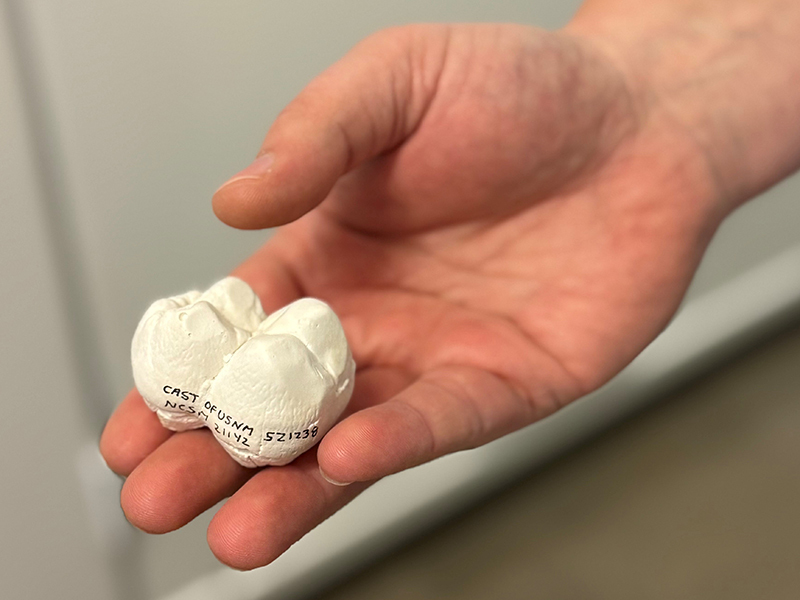When giant ‘hell pigs’ roamed NC
July 02, 2025

Around 20 million years ago, in a time known as the early Miocene, an interesting selection of large mammals roamed eastern North Carolina. Where now you might see white-tailed deer and black bears, back then humans (if they had existed) might have run across a little red panda or even a rhinoceros.
Add to that, horses that were less than half the size of today’s horses, extinct deer-like animals with bizarre head ornamentation (protoceratid), and a “hell pig” (entelodont) which could be 6 feet tall at the shoulder and weigh more than 1,600 pounds.
Museum paleontologist Sean Moran recently documented about a dozen fossil taxa coming from a few dozen specimens that had been collected by professional and amateur paleontologists over the past few decades. The fossils, a lot of them teeth, were culled from a group of rocks called the Belgrade Formation and located near Maysville, North Carolina.
While the number of early Miocene land mammal fossils found in North Carolina is low compared to relative hotbeds like Florida, Nebraska and Texas, the find is still important to paleontologists. “Around this time … we get a lot of Eurasian immigration,” Moran explained. How? Low sea levels during this glacial period exposed what’s known as the Beringian land bridge, which physically connected Asia and Alaska.
“So, we start to see (in the fossil record) these Eurasian species show up in North America. For example, this is when we see the red panda show up in Nebraska, Florida and Delaware. On the east coast we don’t have a great fossil record of these species outside of Florida, but our North Carolina information helps fill out the bigger picture of which Eurasian animals made it this far east.”
Although paleontology is a field that is a little more removed from modern day conservation and research, Moran notes. “What we’re seeing in the past really does inform what we understand now and in the future. These animals fill in gaps in the evolution of early horses and early rhinos, as well as red pandas that until a couple decades ago we didn’t even think existed in North America.”
Moran will be spending two weeks in Nebraska this summer where he’ll be working on late Eocene / early Oligocene ~35-32 Ma fossils. You can hear from Moran and ask him questions during his appearance on Dino Dig Live, August 8, noon-12:30pm ET. Join us in-person in the SECU Daily Planet Theater or watch the livestream on YouTube Live.
For more information about our upcoming activities, conservation news and groundbreaking research, follow @NaturalSciences on Instagram and Facebook.

